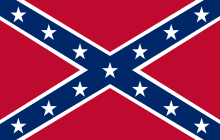Hines, who launched his property company as a one-man shop in Houston in 1957, developed billions of dollars’ worth of real estate across the globe, influencing generations of builders and leaving a lasting mark on the world’s top cities.
The founder and chairman of the Hines firm was one of the first developers to hire sought-after architects, proving that tenants would flock to top-quality buildings, even in a down market. He raised the bar for commercial real estate by showing that quality and financial success could be mutually attainable.
“Gerald Hines was one of the great patrons of American architecture of the 20th century,” said architectural historian Stephen Fox, putting him in a category with John and Dominique de Menil, Ima Hogg and her brother William, and Edgar Odell Lovett, the first president of Rice University.
“He put Houston on the map in terms of architecture by his imaginativeness and his business discipline in understanding how he could work with the best architects of the world within the economic constraints of real estate development and construction,” said Fox, a lecturer at the architecture schools at Rice and University of Houston.Hines and his development firm were responsible for many of Houston's most iconic buildings, including One Shell Plaza, Pennzoil Place, the TC Energy (originally RepublicBank) Center, the JP Morgan Chase (formerly Texas Commerce) Tower, the Transco (now Williams) Tower, and the Galleria. The JP Morgan Chase Tower, built in 1982, remains Texas's tallest building, while the Williams Tower, opened in 1983, remains the tallest building in the United States located outside of a central business district. In addition to his Houston developments, Hines was responsible for notable buildings in places such as New York, San Francisco, Chicago, and Dallas.
Downtown’s Pennzoil Place represented a breakthrough for Hines from a design and development standpoint. The twin 36-story trapezoidal towers of darkly tinted glass was named “Building of the Decade” when it was completed in 1975 by the late New York Times architecture critic Ada Louise Huxtable.
Hines collaborated on the project with architects Philip Johnson and John Burgee who turned away from the boxy modern design of the era exemplified in One Shell Plaza just up the street.
“In so doing they demonstrated that if you make a building that is distinctive there are tenants that will pay extra to have their offices there,” Fox said. “That was kind of the Hines breakthrough — to understand and respect the power of architecture to create structures potential clients would want to identify with.”
Hines worked with Johnson and Burgee on multiple projects, including the so-called “Lipstick Building” at 53rd at Third in midtown Manhattan, a 34-story elliptical-shaped office tower completed in 1986; and San Francisco’s 101 California, completed in 1982, a cylindrical 48-story tower of glass and granite and glass, featuring a seven-story, glass-enclosed lobby.
Hines developed friendships with many of the architects who designed his buildings. For his 90th birthday, he was joined by seven of them to discuss design and development in a public architecture forum at Houston’s Hobby Center. Hines sat alongside Burgee, A. Eugene Kohn, Henry Cobb, Cesar Pelli, Robert A.M. Stern, Jon Pickard and Art Gensler who talked of Hines’ outsize influence on commercial real estate. The event drew an audience of more than 2,000.
“Our best work was for Gerry Hines,” Burgee, who, along with the late Philip Johnson designed several buildings for Hines, said at the forum.Given his patronage of some of the era's most notable architects, perhaps it is only natural that Hines also lent his support the next generation as well:
Hines’ philanthropic contributions included a $7 million donation in 1997 to the University of Houston’s architecture school that now bears his name.
When he spoke to students, Dean Patricia Belton Oliver said, there was an immediate connection and mutual respect.
“I never saw him light up quite the way he did when he was surrounded by students,” she said. “For someone who made his career in such a tough business, it was so gratifying to see the joy he experienced when he had the opportunity to share his legacy.”Discussions about Hines' contribution to the UH College of Architecture occurred towards the end of my time as a student there, and I remember it being controversial at the time. Some students were miffed that the college "sold out" to a developer, rather than an actual architect. Never mind the fact that, without developers, architects wouldn't have any business at all!
I never got to meet Hines in person, although I was among a group of UH architecture students who was invited for a luncheon at his River Oaks mansion, which was rather impressive.
Hines' firm continues to operate under the direction of his son, Jeffery. A tribute to Hines on the company's website is worth a read. The UH College of Architecture has put up a tribute as well.









